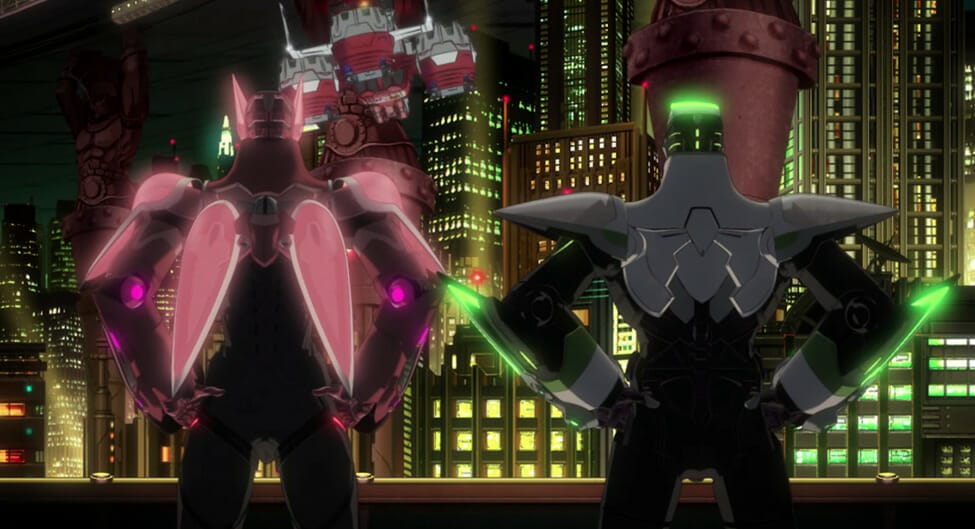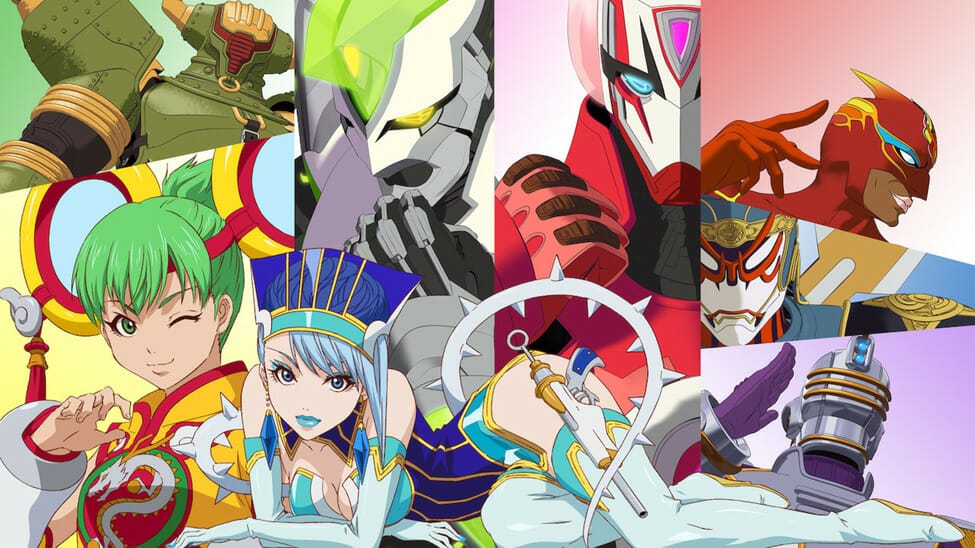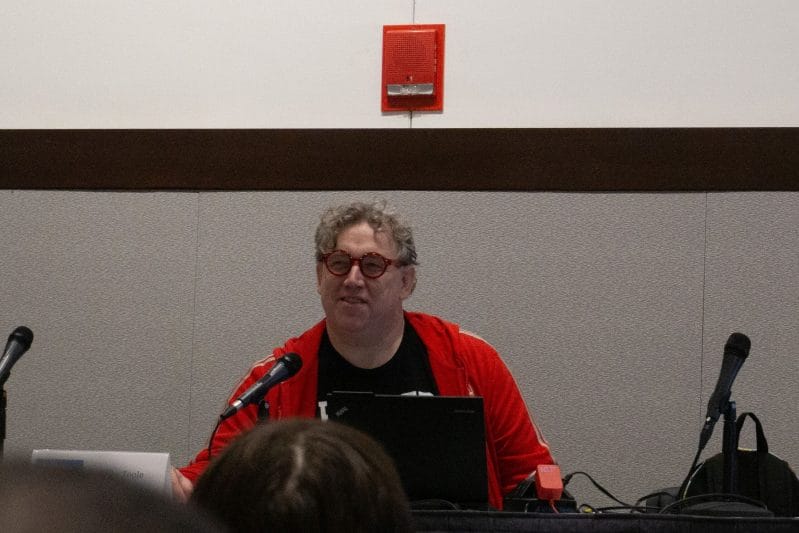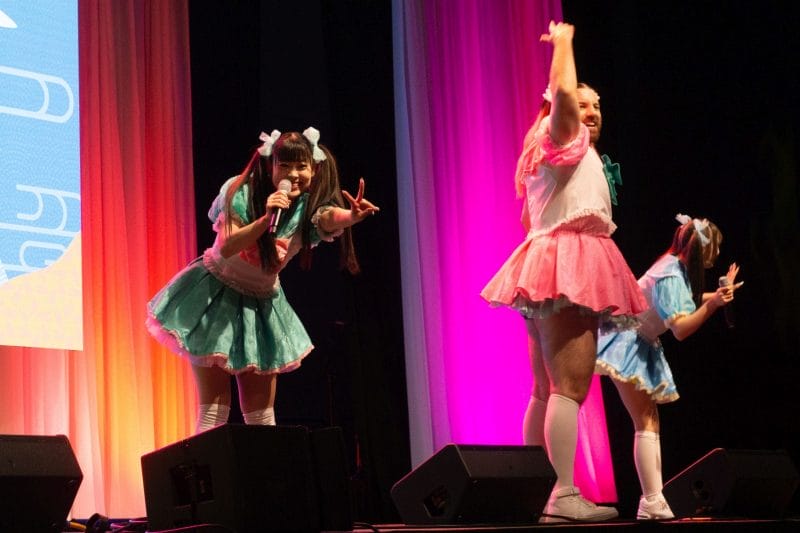Superheroes have always found a home in the grand halls of anime, from Astro Fighter Sunred, to Shin-chan’s Action Bastard, to Sailor Moon’s Sailor Guardians. While these heroes previously were inspired by Tokusatsu, especially the works of Shotaro Ishinomori, it’s hard to deny that newer series began to draw more deeply from the realm of western comics, as time went on.
Before the Marvel Cinematic Universe was a household name, before One Punch could be thrown, and before you could say “run,” the unlikely duo of Tiger & Bunny paved the way. With justice (and a bit of luck) on their side, Sunrise’s hero team laid the groundwork for anime heroes to come, while securing a place in the brilliant future that awaits.
Tiger & Bunny introduces viewers to the city of Stern Bild, a bustling metropolis where superheroes and supervillains have leapt from the pages of comic books into the real world. Unlike the X-Men or the Justice League, though, heroes are essentially salarymen. Day in and day out, they work for sponsors and vie to climb the rankings on reality TV show Hero TV. Unfortunately, the sponsors’ demands to put on a show sometimes means that heroes must put their pursuit of justice on hold.

Kotetsu T. Kaburagi is a single dad who competes on Hero TV under the identity of Wild Tiger. As Wild Tiger, Kaburagi is able to tap into superhuman strength for five minutes per hour. Though he once commanded the admiration of fans throughout the city, Kotetsu’s refusal to follow the sponsors and his penchant for doing the right thing at any cost has led to him to start making messes more often than he has actually solved problems. Kotetsu’s star quickly faded, as he was saddled with the far less enviable reputation as an out-of-touch old man, both among his fellow heroes and the moneyed benefactors. After his final backer exits the market, Kotetsu finds an unlikely patron in the form of Hero TV’s own creators.
The organization, Apollon Media, partners Kaburagi with Barnaby Brooks Jr.: a fresh-faced hero who has the same power as Kotetsu. Unlike his older comrade, though, Barnaby is far more eager to please the sponsors.
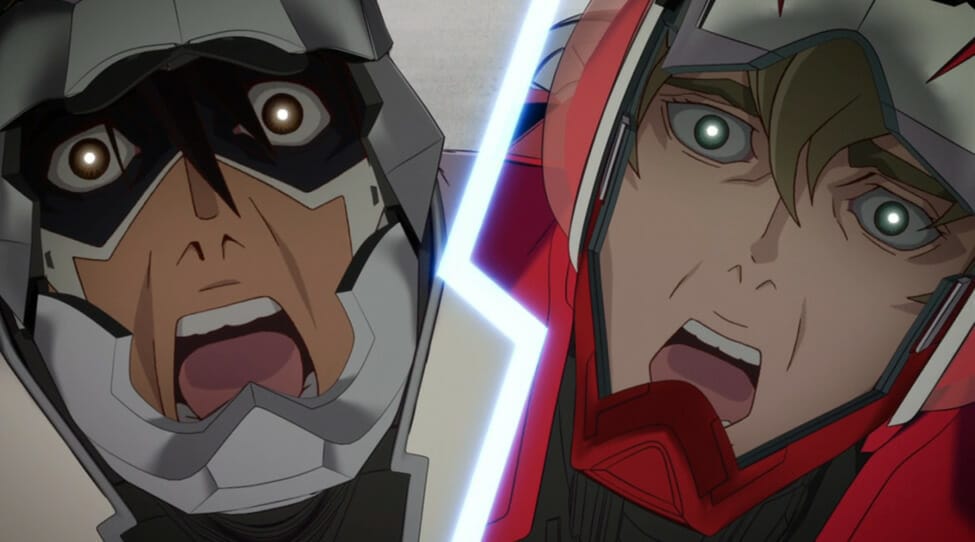
Much of the series’ main plot focuses on Barnaby and Koetsu’s growing camaraderie, as bitterness and bickering gradually give way to a sincere friendship. Beneath this narrative is a subdued, if compelling subplot that focuses on Kotetsu’s struggles to connect with his estranged daughter after years of working on Hero TV.
It’s a remarkably grounded story, particularly given the fantastical backdrop. Heroes like Sky High and Blue Rose feel larger than life, lending whimsy and cynicism in equal measures to this world, where the heroism is often doled out under the weight of a corporate jackboot.

This is further emphasized by Tiger & Bunny’s subversive approach to product placement. The series’ heroes are famously decked out in dozens of real-life brands, from Amazon to Pepsi. Their logos are front-and-center whenever Hero TV is rolling, and characters even go as far as to cut product promos before bringing dishing out sweet justice. There’s a dark sense of humor to the spectacle, as it shines a spotlight on the dystopian boxes that many workers find themselves in every single day. Whether they’re working in retail or corporate offices, employees quickly find themselves slaves to “the brand,” as well as the merciless engine that drives shareholder profits. Tiger & Bunny just takes this reality a step further, positing what the world would be like if, say, a paramedic were required to talk up Red Bull before treating the victims of a car accident.
In this light, it’s almost tragic that versions of the series exist that remove the overt branding. Their absence leaves a gaping hole in the experience, especially in segments like the opening credits, which are borderline pornographic in the prominence of their product placement.

Masakazu Katsura’s (Zetman, Wingman) character designs lend a unique charm to the series’ visual identity. His models for Tiger and Barnaby’s hero suits are evocative of the sleek, almost automotive Iron Man suits from Tony Stark’s outings in 2008 and 2010. They’re immediately cool and powerful to behold, and it’s clear that they were crafted by people with way too much money to play with. Kotetsu expresses as much when initially presenting his “Iron Man” suit, preferring to hold on to his tattered and trusty cloth costume. It’s a distinctly western aesthetic, which plays well against other, more tokusatsu-inspired heroes like Origami Cyclone and Bombeman.

Katsura balances the heroes’ fantastical personas with their everyday street wear. Kotetsu could easily be mistaken for just some random guy around town, outside of his costume. At a glance, one would be hard-pressed to tell if he’s heading to the bar for an after-work drink, or just heading home to make fried rice for dinner. This down-to-earth nature extends to the rest of the cast who, while superheroes, are also wondering what they’ll be doing for dinner tonight. For them, heroism is just a job, a way to pay the bills.

Taking a job just to pay the bills is something that many of us are uncomfortably familiar with. Series Director Keiichi Sato (Karas, Big O) put that at the core of his production. In a home video interview, Sato explained that he and the team focused the series on a working adult audience. He wanted to appeal to people who are more concerned with paying bills and on what they’ll be eating tonight, rather than what the latest anime was anymore. Even more painfully relatable, Sato was given his chance to direct in 2009, shortly after the American housing market crash dragged the global economy along with it. His response was to create a work about never giving up. Even in the face of being broke, dealing with a terrible boss, and living in a world dominated by out-of-control capitalism, there are still silver linings that make things just a little better.

With the team taking such a grounded approach, it’s hard to ignore the irony in the fact that Tiger & Bunny’s success enticed producers to open their wallets to similar projects. The heavy shade the series throws at the corporations that rule our lives, as well as those of the citizens of fictional city Stern Bild, seemed to fade away once the powers that be factored in the allure of a sweet honey pot of home video sales, built in product deals, and rampant merchandising that consumes the social media presence of its brand.
Despite that, the relatable nature of the series remains a big part of why the series’ popularity endures to this day. It’s why Tiger & Bunny is considered a classic by western anime critics and Japanese fans alike. It was the rare show that let audiences know that, just because the hero is super, it doesn’t mean they’re free from the problems we all face. And that knowledge, even if only for a moment, helps make our challenges just a little less harrowing.
